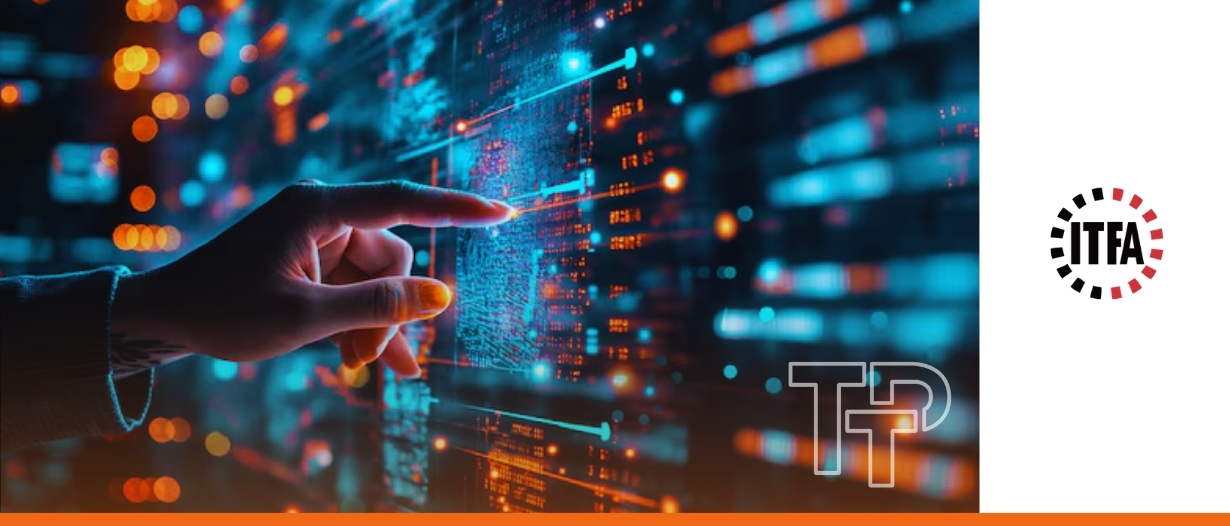Breaking: ICC expands sustainable trade framework with Wave 2 Principles – New guidelines bring momentum, but execution hurdles remain
Deepesh Patel
Jul 02, 2025
 Sean Edwards
Jul 02, 2025
Sean Edwards
Jul 02, 2025

At the European Bank for Reconstruction and Development (EBRD) Trade Facilitation Program (TFP) event in London, Trade Treasury Payments (TTP) sat down with Sean Edwards, Chair of ITFA, to discuss the state of play in trade finance, ranging from tariff policy to digitisation and the legal shifts reshaping both.
On the question of tariffs and global trade friction, Edwards was cautious but not alarmist.
Edwards said, “There’s no panic. Nobody is saying this is the end of trade finance as we know it. It’s all going to be rewritten. What’s Trade Finance 2.0 going to look like? It’s wait and see.”
While the uncertainty has prompted financial institutions to re-examine client exposure and shifting supply chains, it has not, in Edwards’ view, led to any drastic pullback from trade. “Nobody is withdrawing lines, nobody is getting out of trade,” he noted.
Countries absorbing supply chain shifts may see increased export activity and infrastructure demand, but Edwards believes the long-term trajectory of trade remains intact. “When we look back in six months’ time, I think we’ll see this was one of those interesting historical events with some significant effects, but the global economy will likely return to something close to its previous path.”
Importantly, he sees one upside in all of this: a renewed focus on industrial policy, particularly in Europe. “It has made a lot of people think about how they can satisfy their own needs, how they can encourage their own industries. That idea of being a little bit more self-sufficient is actually a good one.”
When asked about the role of the United States going forward, Edwards said, “For defence, we’ll always need the US. For trade, we will still need the US dollar for the foreseeable future. That’s their most powerful tool.”
On the topic of digitalisation, Edwards struck a measured but optimistic tone. “It’s definitely accelerating, but from a low base,” he said. “The scale isn’t there yet, but it is scaling.” He pointed to the uptake in digital trade documents as a sign of progress. “If you look at things like electronic bills of lading, we’ve moved from sub-1% to something like 5% plus in container shipping. So that’s working, that’s scaling.”
ITFA’s own efforts to promote digital negotiable instruments are also bearing fruit. Edwards cited the example of the Bank for International Settlements (BIS) testing a proof of concept for digital promissory notes in collaboration with a multilateral development bank. While the use case was narrow, the initiative demonstrated feasibility and regulatory interest.
For smaller lenders and fintechs, these digital tools are proving useful in financing SMEs particularly because digitised instruments like bills of exchange are more attractive to non-bank investors. “They like something that looks like, acts like, and is cleared like a bond,” Edwards said. “Once they’re digitised, these traditional instruments become much more investable.”
Still, adoption remains slow relative to the perceived benefits. Trade associations like ITFA often highlight the promise of cost savings and new liquidity sources, but real-world implementation lags. “We get a bit frustrated that things aren’t happening more quickly,” Edwards admitted.
Much of that delay is rooted in legal and regulatory environments, which have only recently started to shift. “Just because you can do something doesn’t mean you want to do it, or that it makes sense to,” he said. “But increasingly, those benefits are being recognised.”
Looking ahead, Edwards believes the convergence of physical and financial supply chains, accelerated by technologies like AI, blockchain, and tokenisation, will be critical. “A lot of global trade is becoming digitised. The delivery of physical goods is becoming more digital too. The impact of digitisation on physical supply chains is significant.”
However, he remains focused on the need to better integrate this with the financial layer. “It’s always a little bit frustrating that we can’t link that much more directly or immediately with the financial supply chain,” he said. “But people are realising that the two do need to meet up, and technically, that’s now possible.”
While Edwards hesitated to predict when the industry might hit an inflexion point, he was confident in the trajectory. “It’s a marathon, not a sprint,” he said. “But we’re on the right path.”
Watch the video via Youtube.

Carter Hoffman
Jul 02, 2025
Trade Treasury Payments is the trading name of Trade & Transaction Finance Media Services Ltd (company number: 16228111), incorporated in England and Wales, at 34-35 Clarges St, London W1J 7EJ. TTP is registered as a Data Controller under the ICO: ZB882947. VAT Number: 485 4500 78.
© 2025 Trade Treasury Payments. All Rights Reserved.